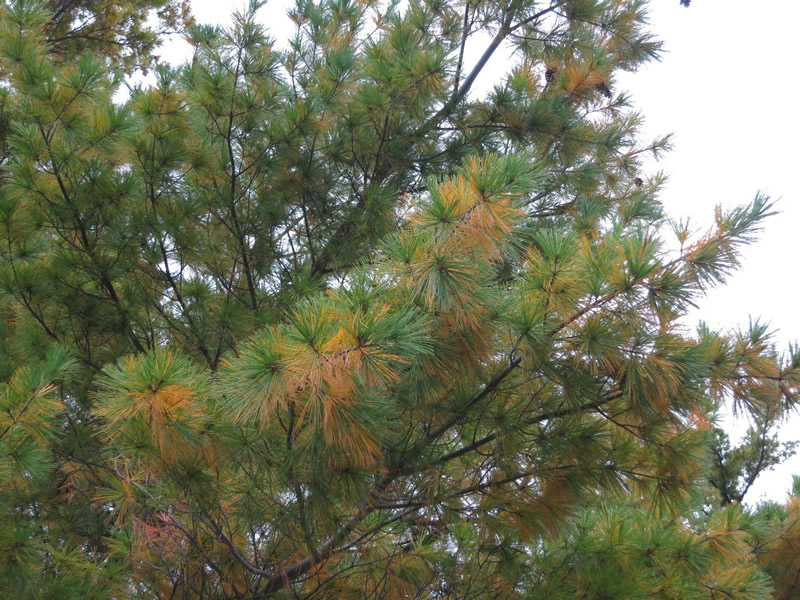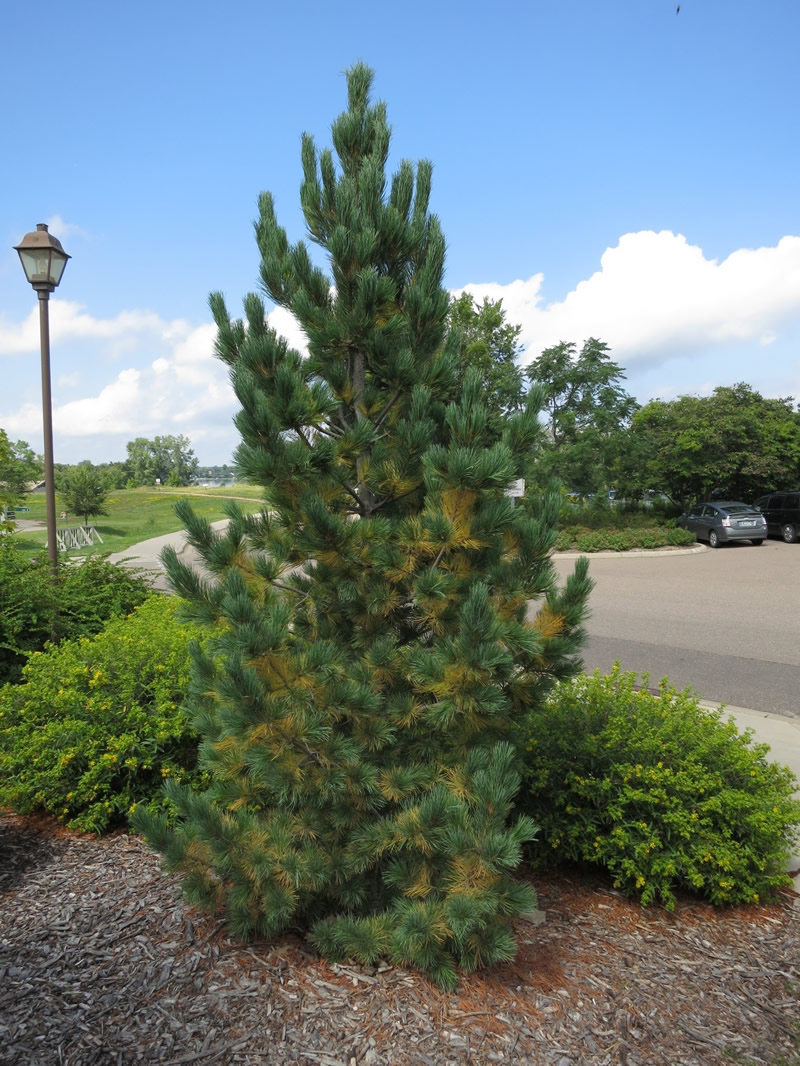Issue 12, October 12, 2020
Seasonal Needle Drop
Around this time of year, the U of I Plant Clinic receives many calls regarding yellowing needles on evergreens. The appearance can be quite alarming to homeowners whose seemingly healthy evergreens suddenly turn yellow and drop large numbers of needles. Fortunately, most are witnessing a harmless and natural part of the plant’s cycle. Despite the name, evergreen foliage does not stay on the plant forever. Evergreens commonly shed their less productive or older needles. Most pine species shed their needles after 3 to 4 years. The occurrence is more noticeable on some species, such as white pine, and less evident on others, such as spruce and fir.
Seasonal needle drop is usually confined to the innermost (oldest) needles. Homeowners should be more concerned when the new/current season’s growth suddenly discolors, wilts, or drops from the plant. Damage occurring to the new growth could be the signal of a more severe pest or cultural problem.
Deciduous conifers have also been known to cause alarm to some novice gardeners. During the growing season, bald cypress and larch trees look similar to their evergreen counterparts. However, they shed all of their leaves in the autumn. Over the years, the Plant Clinic has received several samples from “spruce trees” that had suddenly dropped all their leaves at the end of the season. Fortunately, for our clients, and their trees, we were able to correctly identify the tree, and let them know the tree’s leaves would return in the spring.

Photo 1. Seasonal Needle Drop on White Pine

Photo 2. Seasonal Needle Drop on Pine
Author:
Travis Cleveland